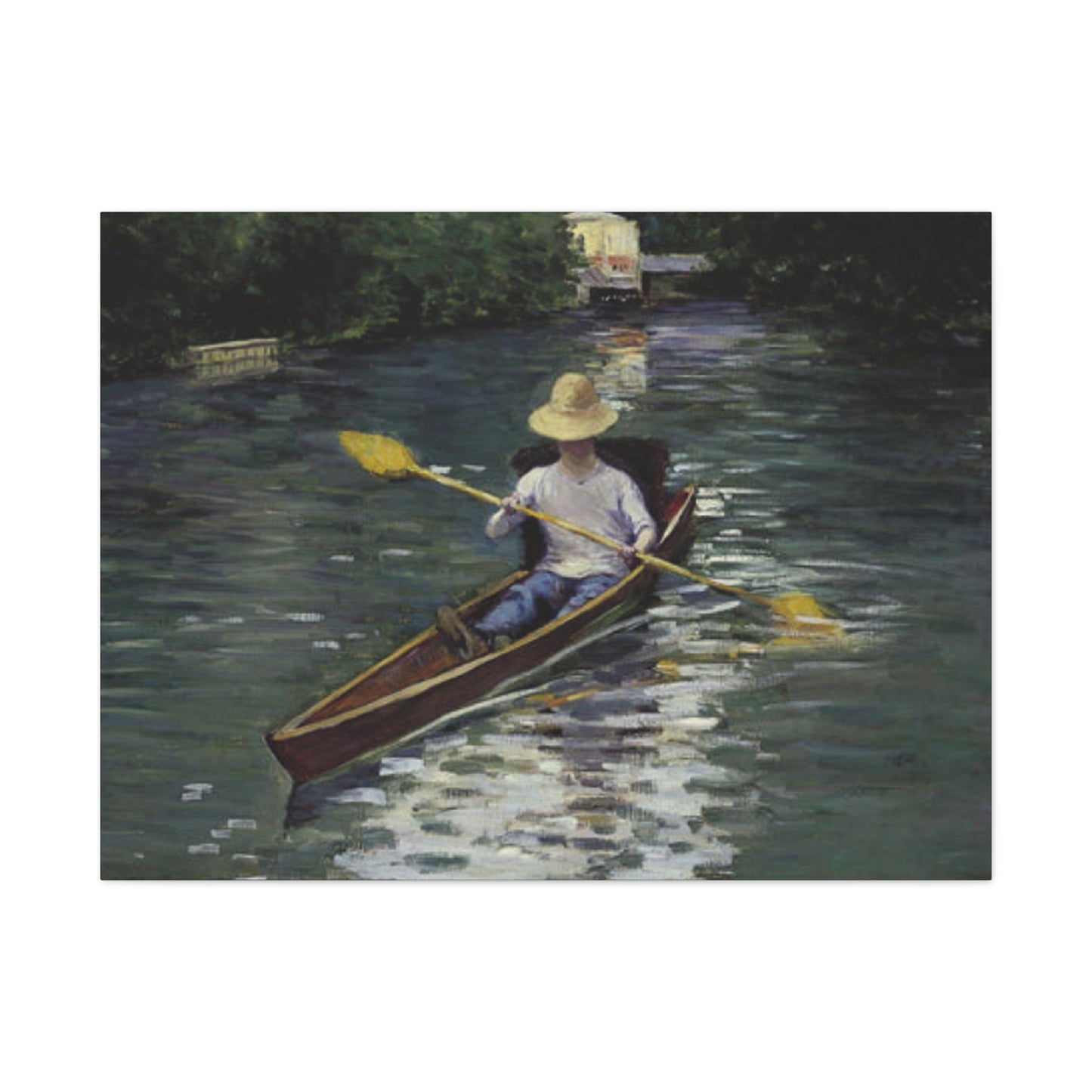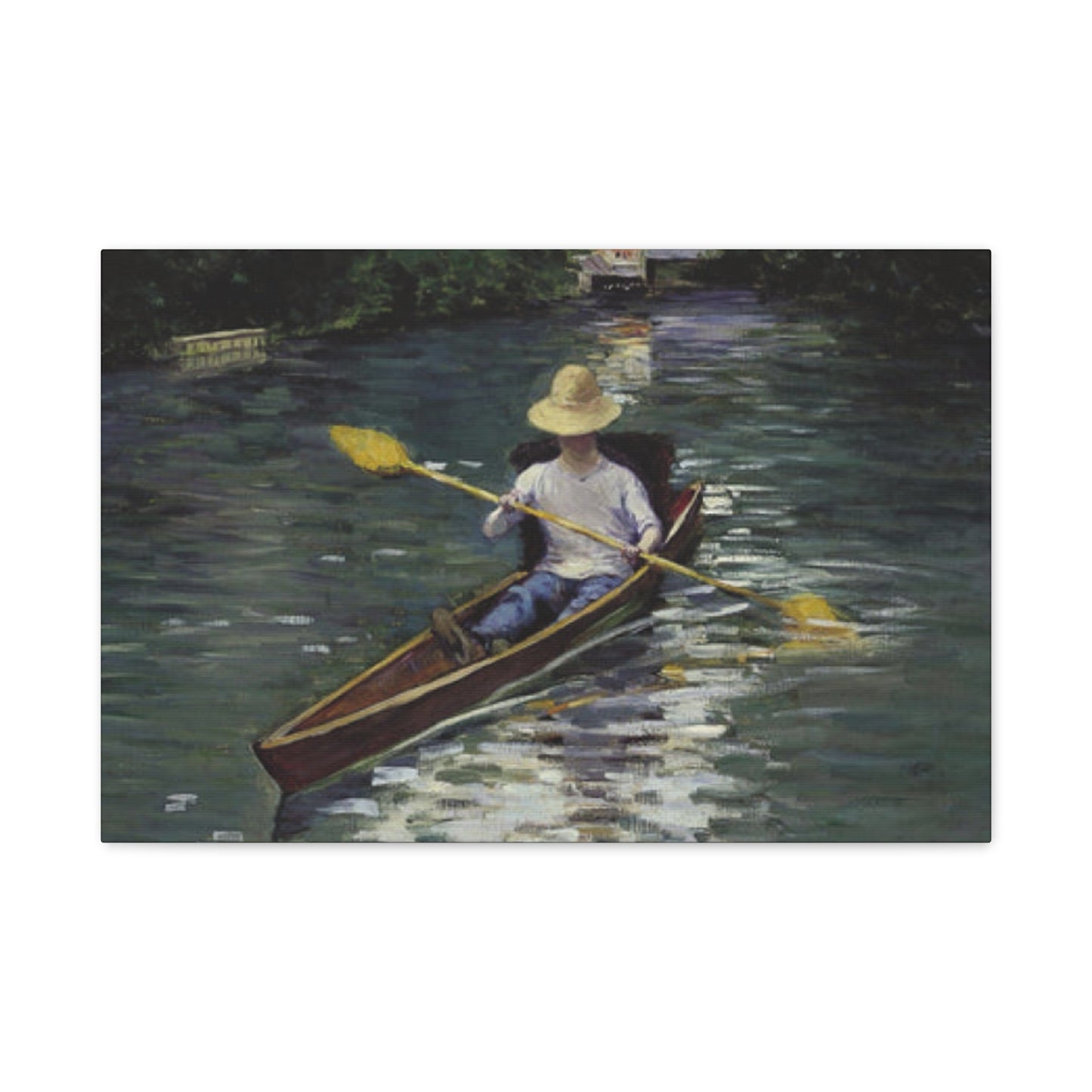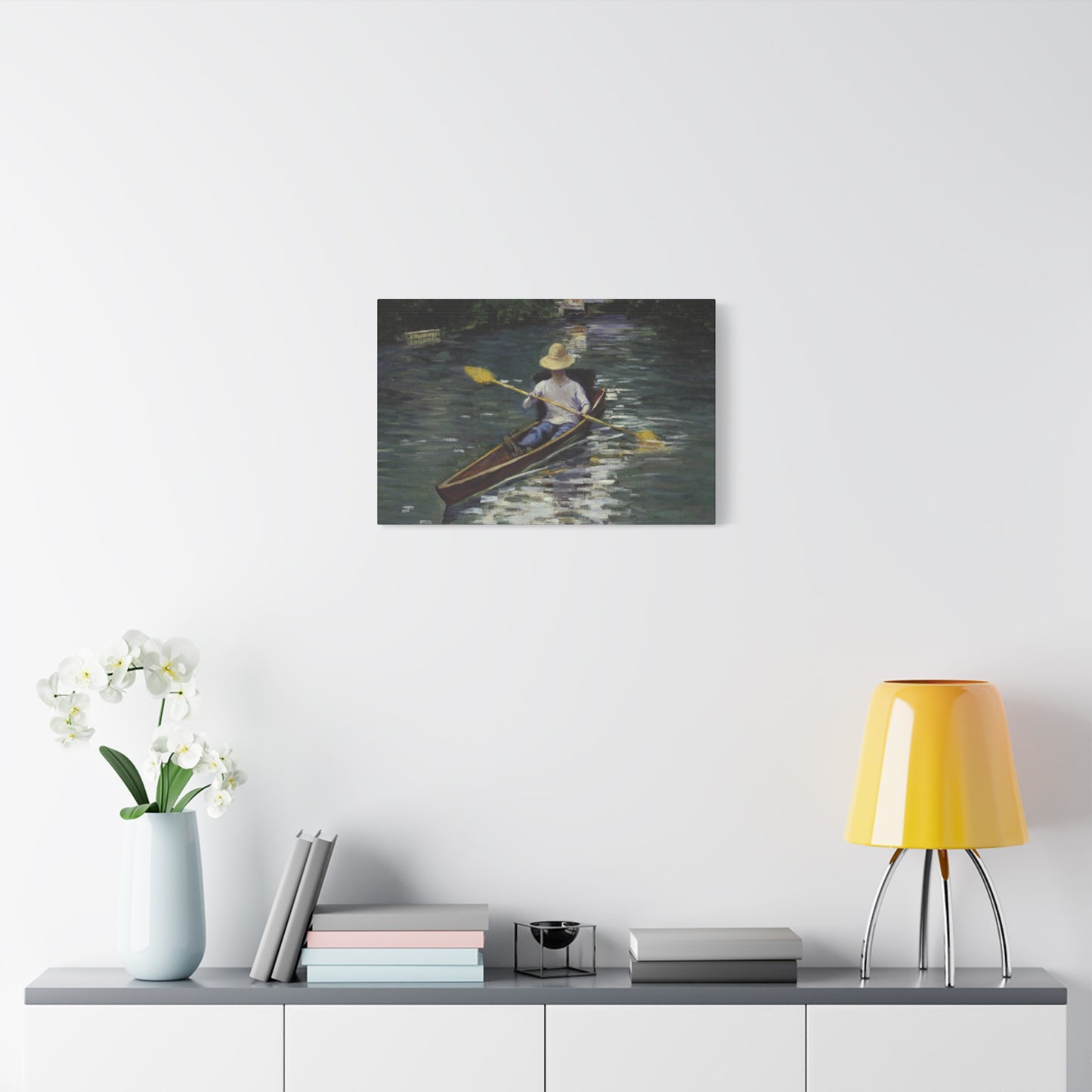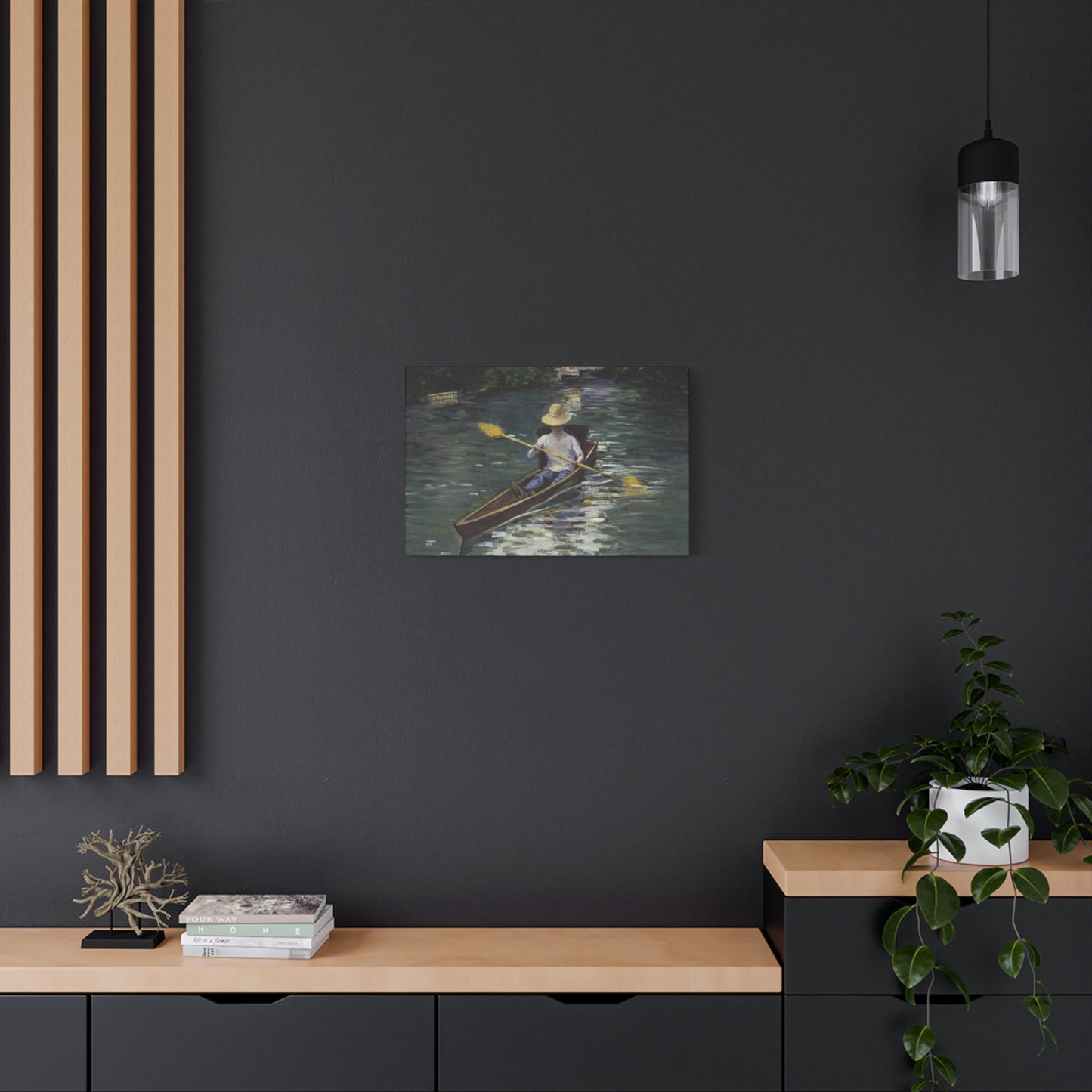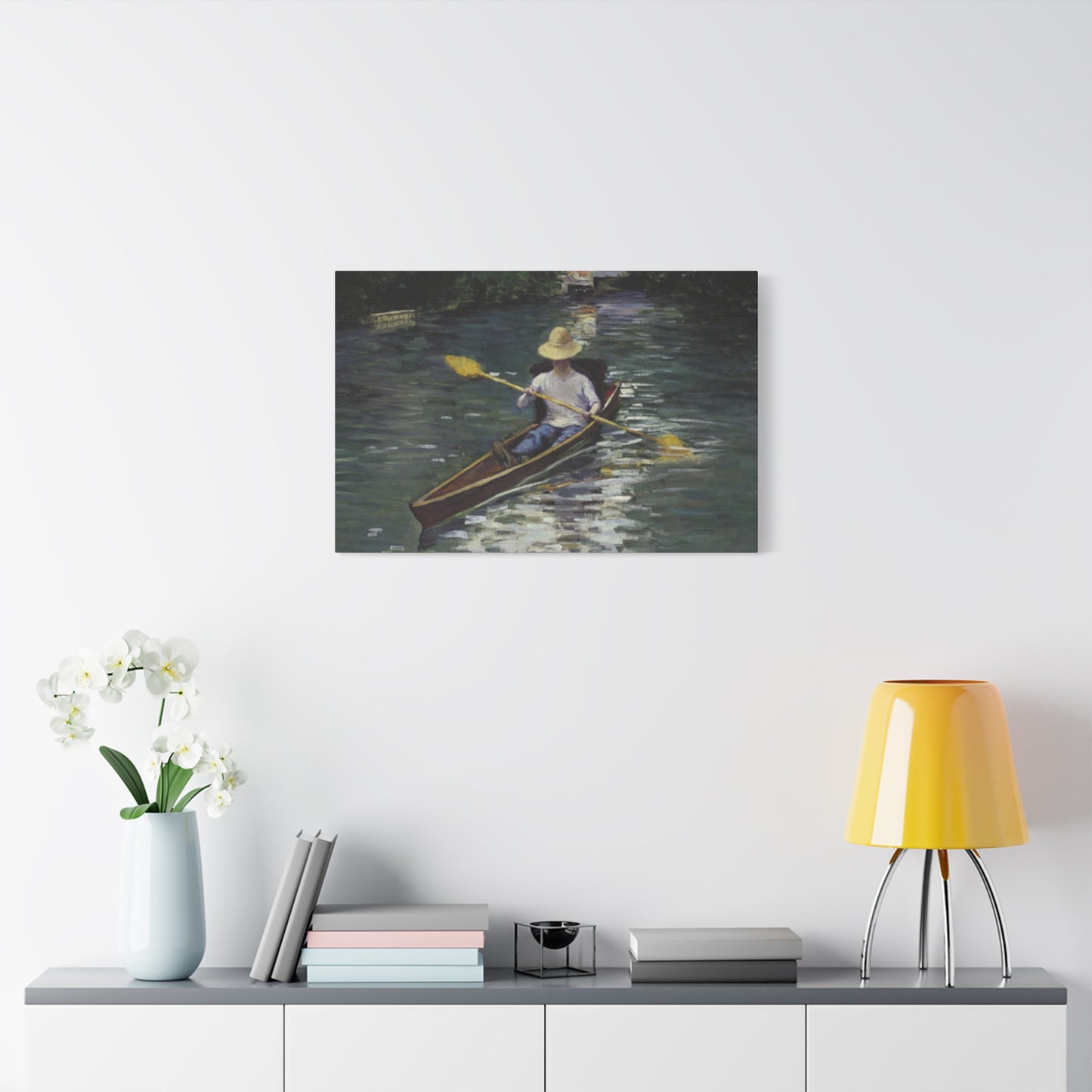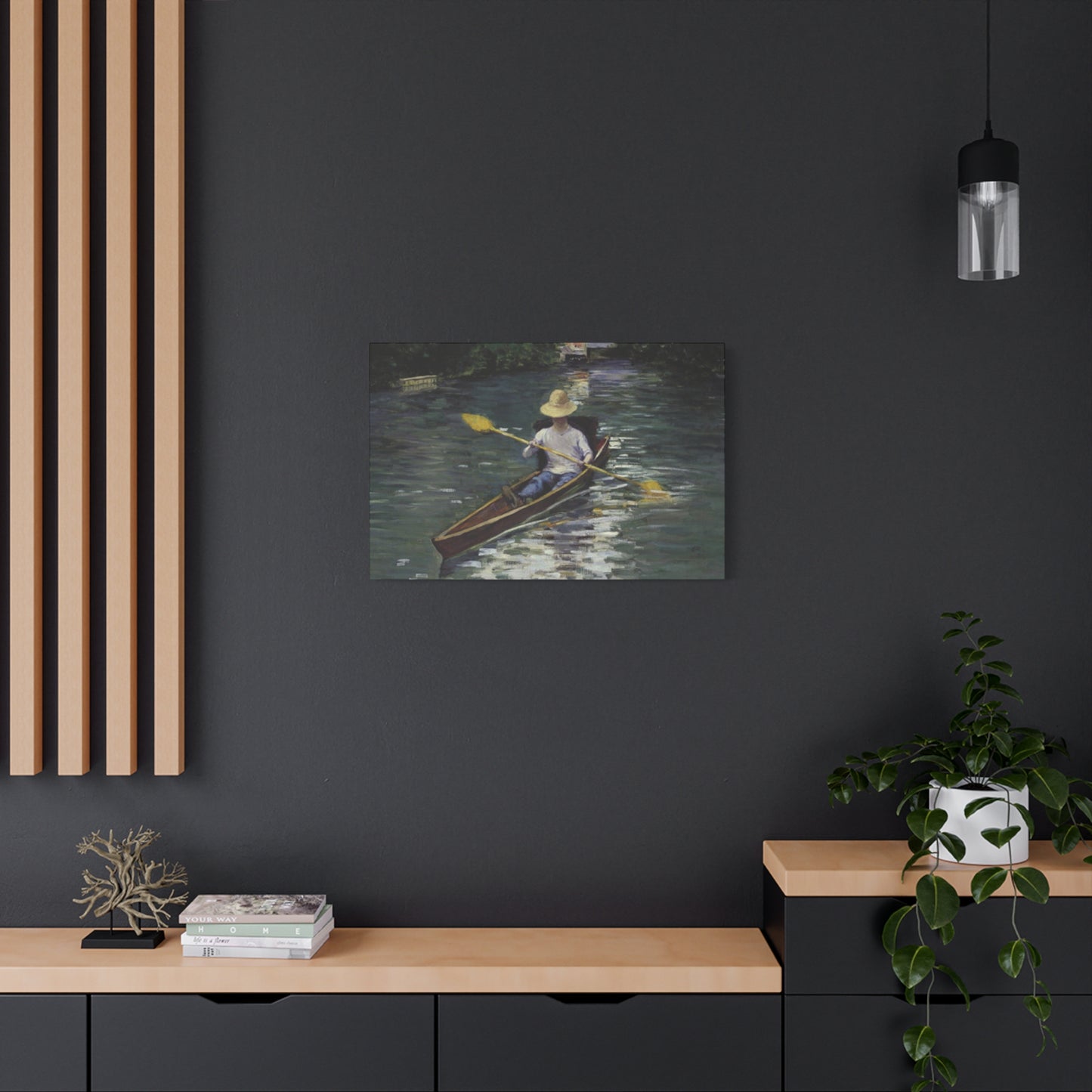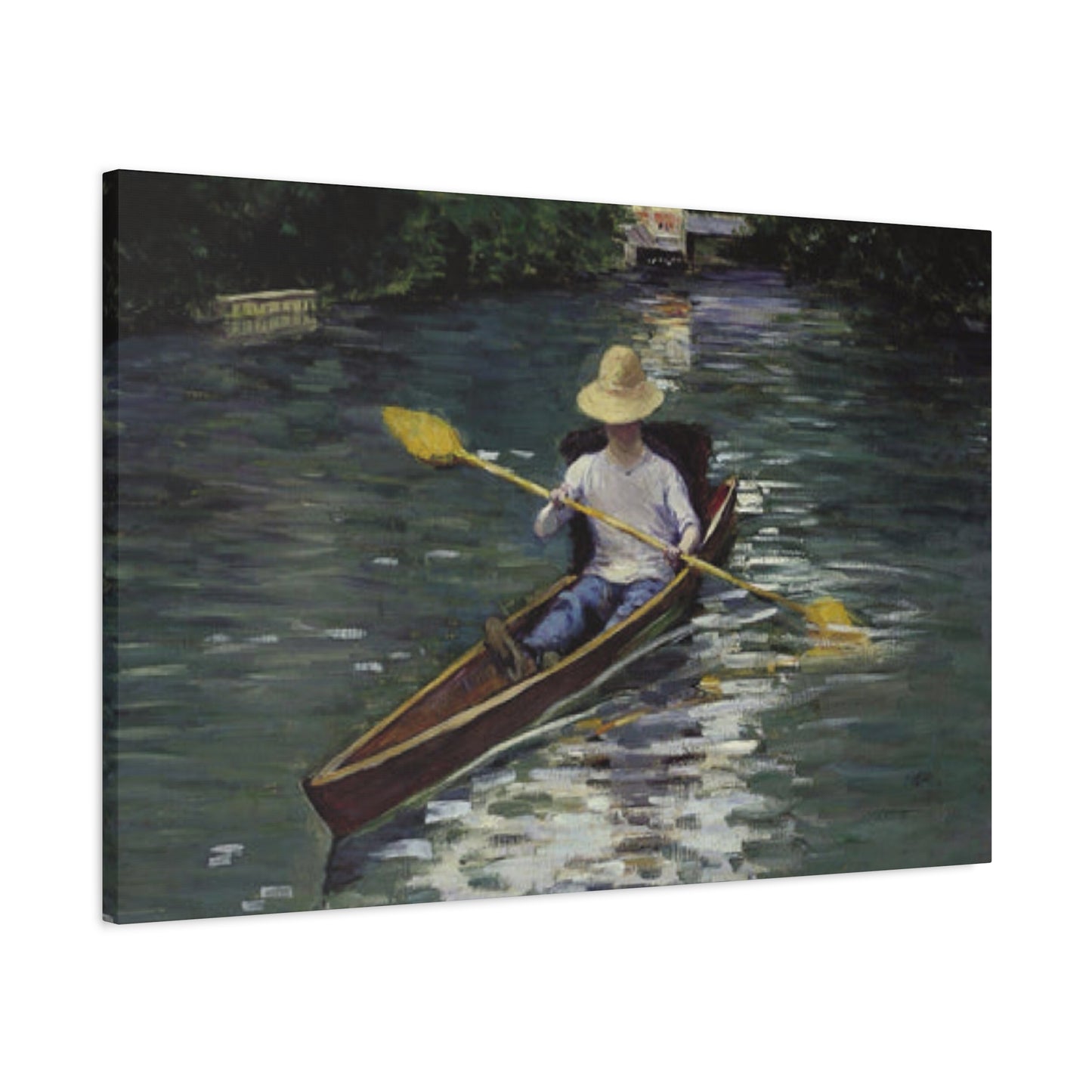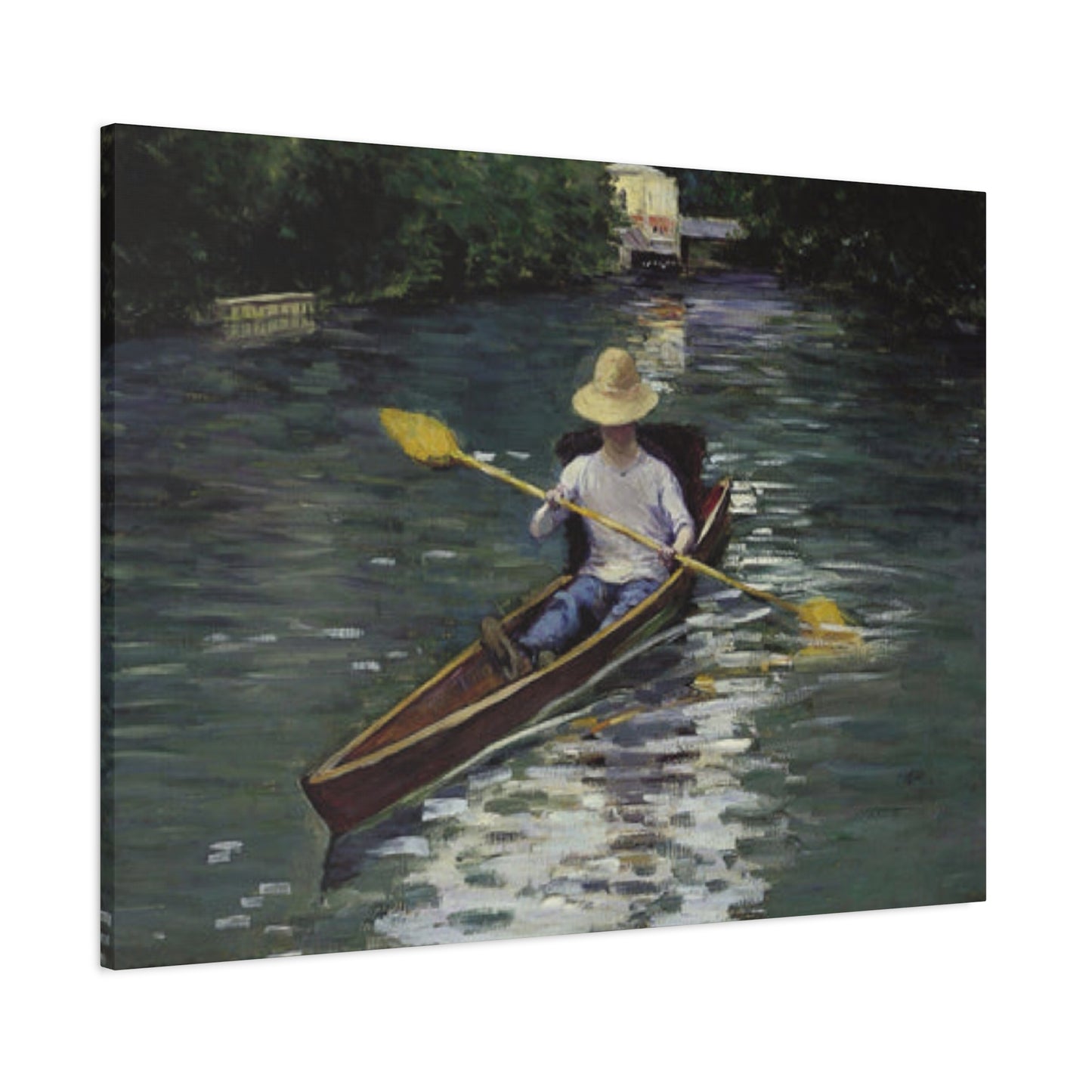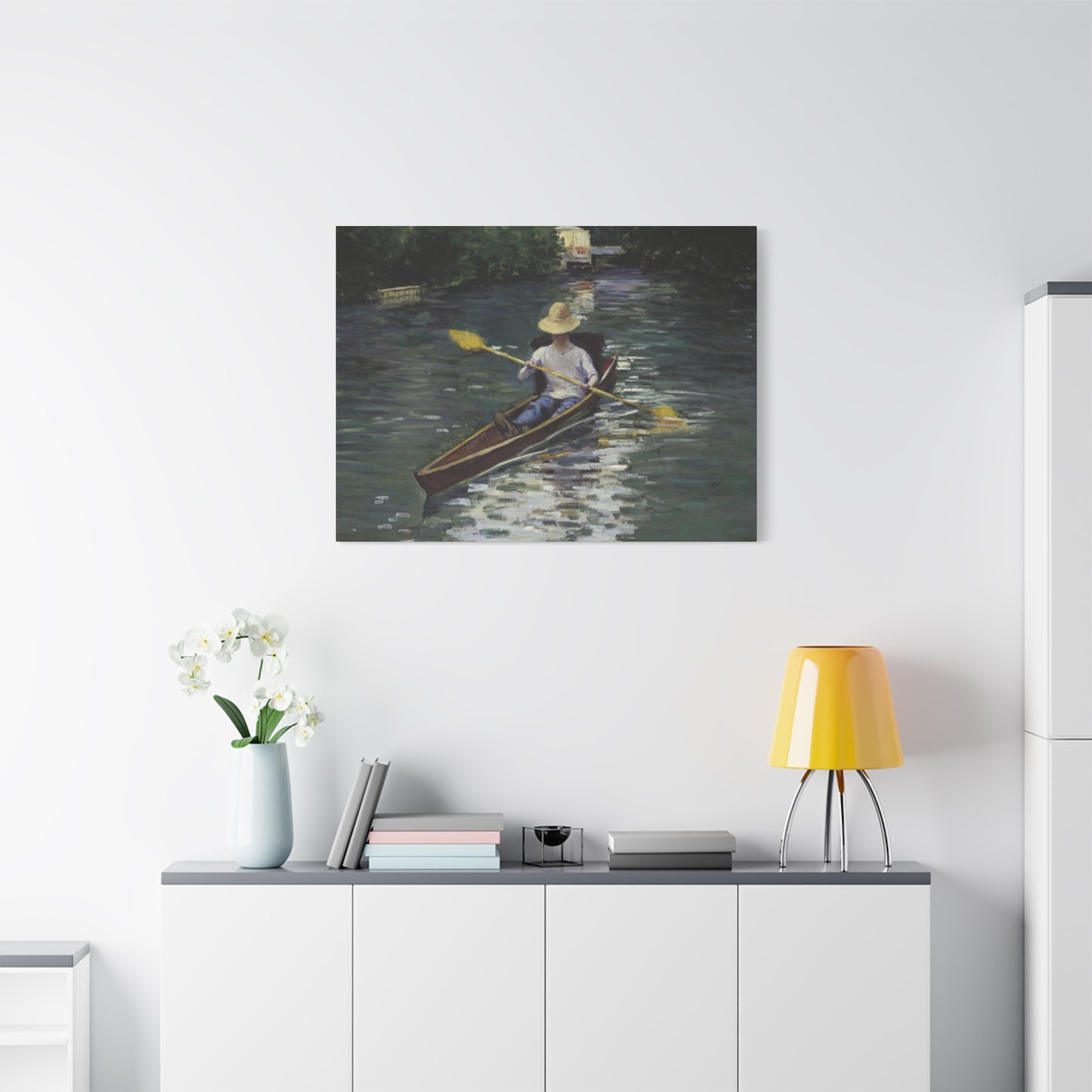Aquatic Adventures: Gustav's Kayaking Painting Wall Art Masterpieces
Gustav's remarkable collection of kayaking artwork stands as a testament to the profound connection between human adventure and natural aquatic environments. His masterful depictions of paddling through pristine waters have captivated art enthusiasts and outdoor adventurers alike, creating a unique niche in contemporary artistic expression. Through his distinctive style and passionate attention to detail, Gustav has established himself as a premier artist specializing in kayaking themes that resonate deeply with viewers who appreciate both fine art and outdoor recreation.
The artist's journey into aquatic sporting art began during his own paddling expeditions across various waterways, where he developed an intimate understanding of how light dances across water surfaces and how kayakers navigate through challenging currents. This firsthand experience translates into authentic representations that capture not just the visual aspects of kayaking but also the emotional and spiritual dimensions of the activity. Gustav's kayaking wall art serves as more than decorative pieces; they function as windows into adventurous worlds that inspire viewers to explore their own relationships with nature and physical challenge.
Each piece in Gustav's collection demonstrates his exceptional ability to freeze dynamic moments in time, preserving the essence of human interaction with aquatic environments. His paintings showcase kayakers navigating through various water conditions, from serene lake surfaces that mirror surrounding landscapes to rushing river rapids that demand technical skill and courage. The diversity of his work ensures that collectors can find pieces that match their personal experiences and aesthetic preferences while maintaining the consistent quality and thematic coherence that defines Gustav's artistic vision.
Aquatic Themes Explored Through Gustav's Kayaking Artistry
Gustav's exploration of aquatic themes in his kayaking artwork reveals a deep understanding of water's multifaceted nature and its relationship with human adventure. His paintings consistently demonstrate how water serves as both a challenging medium and a source of tranquil beauty, creating complex emotional narratives that speak to viewers on multiple levels. The artist's treatment of aquatic environments goes beyond simple representation, incorporating symbolic elements that suggest themes of journey, transformation, and harmony between human ambition and natural forces.
The recurring presence of pristine lakes, flowing rivers, and coastal waters in Gustav's work creates a comprehensive catalog of aquatic environments that kayakers encounter throughout their adventures. Each water body presents unique visual challenges that Gustav addresses through careful attention to surface textures, depth perception, and atmospheric conditions. His lakeside scenes often emphasize the mirror-like qualities of calm water, creating compositions where reality and reflection merge to produce dreamlike effects that enhance the mystical qualities of solitary paddling experiences.
River scenes in Gustav's collection capture the dynamic energy of flowing water through bold brushstrokes and strategic color placement that conveys movement and urgency. These pieces often feature kayakers navigating through challenging rapids or peaceful stretches, with the water itself becoming a character in the visual narrative. The artist's ability to suggest the sound and feel of rushing water through visual techniques demonstrates his mastery of translating sensory experiences into artistic expression.
Coastal kayaking scenes present additional opportunities for Gustav to explore the relationship between human adventure and vast natural forces. His ocean-based compositions often include elements such as rocky shorelines, distant islands, and dramatic sky formations that create sense of scale and emphasize the courage required for marine kayaking adventures. These pieces frequently incorporate cooler color palettes that reflect the unique lighting conditions found in coastal environments while maintaining the warmth and humanity that characterizes all of Gustav's work.
The seasonal variations present in Gustav's aquatic scenes add temporal depth to his collection, with spring freshets, summer calm, autumn reflections, and winter challenges each receiving thoughtful artistic treatment. This seasonal awareness demonstrates Gustav's commitment to capturing the full range of kayaking experiences while providing collectors with options that complement different seasonal moods and preferences. The artist's understanding of how seasonal changes affect both water conditions and paddling experiences adds authenticity to his work that resonates with experienced kayakers.
Light and Reflection Mastery in Gustav's Kayaking Compositions
Gustav's sophisticated handling of light and reflection in his kayaking scenes represents one of his most distinctive artistic achievements, setting his work apart from other sporting art through technical excellence and emotional depth. His understanding of how light behaves on water surfaces allows him to create compositions that capture specific times of day and weather conditions with remarkable accuracy while maintaining the artistic interpretation that elevates his work beyond mere documentation.
Morning light sequences in Gustav's collection demonstrate his ability to capture the golden hour magic that experienced paddlers cherish during early water adventures. These pieces often feature soft, warm illumination that creates gentle shadows and highlights the peaceful atmosphere of dawn paddling sessions. The artist's treatment of morning mist rising from water surfaces adds atmospheric depth while suggesting the crisp air and quiet excitement that accompanies early kayaking expeditions.
Midday lighting presents different challenges that Gustav addresses through bold contrasts and precise color relationships that capture the intensity of full sunlight on water. His noon scenes often emphasize the brilliant sparkle of sun-struck waves and the sharp shadows cast by kayakers and their equipment. These compositions frequently include dramatic cloud formations that provide visual interest while demonstrating how changing weather conditions affect the kayaking experience.
Evening and sunset scenes allow Gustav to explore warmer color palettes while creating some of his most emotionally resonant pieces. His treatment of reflected sunset colors on calm water surfaces creates mirror effects that double the visual impact while suggesting the peaceful conclusion of successful paddling adventures. These pieces often feature silhouetted kayakers against brilliant sky displays, creating compositions that emphasize the spiritual aspects of outdoor recreation.
The artist's handling of artificial light sources, such as headlamps during night paddling or campfire illumination during multi-day trips, demonstrates his versatility and commitment to capturing the complete range of kayaking experiences. These pieces often feature dramatic contrasts between warm artificial light and cool natural darkness, creating intimate atmospheres that suggest adventure, camaraderie, and the special bonds formed during challenging outdoor experiences.
Reflection techniques throughout Gustav's work showcase his technical mastery while adding visual complexity that rewards careful viewing. His ability to suggest depth through reflected images creates layered compositions where viewers discover new details with each examination. The artist's understanding of how different water conditions affect reflection clarity allows him to use this technique as both a compositional tool and a method for suggesting specific environmental conditions.
Adventure Enhancement Through Gustav's Kayaking Wall Art
Gustav's kayaking wall art serves as powerful catalysts for bringing outdoor adventure energy into residential and commercial settings, transforming ordinary rooms into inspiration hubs that celebrate the spirit of aquatic exploration. His pieces function as daily reminders of the freedom and challenge available in natural water environments, encouraging viewers to maintain connections with outdoor activities even during periods when direct participation may be limited by weather, location, or other circumstances.
The psychological impact of Gustav's adventure-themed artwork extends beyond simple decoration to influence mood, motivation, and personal goal-setting in positive ways. Studies have shown that exposure to nature-themed art can reduce stress levels while increasing feelings of well-being and connection to the natural world. Gustav's dynamic kayaking scenes amplify these benefits by incorporating elements of human achievement and adventure that inspire viewers to pursue their own outdoor challenges and personal growth opportunities.
Strategic placement of Gustav's kayaking pieces can create focal points that energize different areas of homes and offices while maintaining cohesive design themes that reflect the owner's values and interests. Living room installations often benefit from larger pieces that serve as conversation starters and establish the room's connection to outdoor adventure themes. Bedroom placements can create calming environments that promote restful sleep while maintaining subtle connections to personal adventure goals and memories.
Office and workplace installations of Gustav's kayaking art can provide employees and clients with visual breaks that reduce stress while reinforcing company values related to challenge, teamwork, and environmental awareness. Many businesses involved in outdoor recreation, travel, or environmental services find that Gustav's work helps create authentic atmospheres that resonate with their target audiences while demonstrating genuine commitment to outdoor lifestyle values.
The versatility of Gustav's collection allows for creative grouping strategies that can transform entire walls into adventure galleries celebrating different aspects of the kayaking experience. Sequential arrangements might follow a paddler's journey through various water conditions, while thematic groupings could focus on specific environments or seasonal variations. These installation approaches create immersive experiences that transport viewers into kayaking adventures while maintaining artistic sophistication appropriate for refined settings.
Gustav's pieces also serve as educational tools that can introduce newcomers to kayaking culture while deepening appreciation among experienced paddlers. The technical accuracy of his gear representations, environmental details, and paddling techniques provides authentic references that can spark discussions about kayaking safety, environmental conservation, and adventure planning. This educational dimension adds lasting value to Gustav's work beyond its aesthetic appeal.
Color Dynamics Depicting Kayaking Motion in Gustav's Work
Gustav's masterful use of color to convey kayaking motion represents one of his most innovative artistic contributions, employing sophisticated color relationships and application techniques that create visual movement without sacrificing compositional stability. His understanding of how different colors can suggest speed, direction, and energy allows him to capture the dynamic nature of paddling while maintaining the visual harmony essential for successful wall art installations.
Warm color applications in Gustav's action sequences often focus on the kayaker and equipment, creating visual emphasis that draws attention to human elements within larger environmental compositions. His use of oranges, reds, and yellows in paddle blades, safety gear, and kayak hulls creates energy centers that suggest movement while maintaining realistic color relationships. These warm accents also provide psychological associations with energy, determination, and adventure that enhance the motivational impact of his pieces.
Cool color palettes dominate Gustav's water representations, employing various blues, greens, and purples to suggest depth, movement, and the refreshing qualities of aquatic environments. His sophisticated handling of cool color transitions allows him to create convincing water surfaces that appear to move and flow even in static artistic representations. The artist's ability to suggest underwater visibility through color gradations adds realism while creating opportunities for viewers to imagine themselves in similar aquatic settings.
Transitional color zones in Gustav's work often occur where water interacts with sky, shoreline, or kayaking equipment, creating opportunities for the artist to demonstrate his technical skills while enhancing the overall visual impact of his compositions. These transition areas frequently feature subtle color mixing that suggests atmospheric perspective and environmental integration, helping to unite all compositional elements into cohesive artistic statements that feel natural and convincing.
Color temperature contrasts throughout Gustav's collection create visual excitement while suggesting different environmental conditions and times of day. His ability to balance warm and cool elements prevents his compositions from becoming monotonous while maintaining the color harmony necessary for successful residential and commercial installations. These temperature relationships also help create depth perception that makes his two-dimensional works feel three-dimensional and engaging.
Seasonal color variations in Gustav's work demonstrate his observational skills while providing collectors with options that complement different decorative themes and personal preferences. Spring pieces often feature fresh greens and clear blues that suggest renewal and growth, while summer compositions emphasize brilliant blues and warm accent colors that capture peak paddling season energy. Autumn works incorporate warmer earth tones that reflect seasonal changes while maintaining connection to aquatic themes, and winter pieces employ cooler palettes that suggest the unique challenges and beauty of cold-weather paddling.
The artist's use of color psychology principles enhances the emotional impact of his work while ensuring that his pieces create positive atmospheric effects in various installation settings. His understanding of how different colors affect mood and energy levels allows him to create works that energize active areas while promoting relaxation in more contemplative settings. This psychological awareness adds functional value to Gustav's aesthetic achievements, making his work particularly suitable for therapeutic and wellness applications.
Nature's Recurring Presence in Gustav's Kayaking Art
Gustav's consistent incorporation of natural elements in his kayaking artwork demonstrates his deep appreciation for the environmental contexts that make aquatic adventures possible and meaningful. His paintings regularly feature diverse ecosystems that surround waterways, creating comprehensive visual experiences that educate viewers about the complex relationships between outdoor recreation and environmental conservation. This ecological awareness adds depth to his work while supporting important messages about protecting the natural areas that make kayaking adventures possible.
Forest environments frequently frame Gustav's river and lake scenes, with detailed representations of various tree species, understory vegetation, and wildlife that create authentic settings for his kayaking narratives. His attention to botanical accuracy reflects extensive field observation while providing educational value for viewers interested in natural history and environmental science. These forest elements also create visual frames that focus attention on water activities while suggesting the larger ecosystems that support both wildlife and human recreation.
Rocky shorelines and geological formations in Gustav's coastal and lake scenes demonstrate his understanding of how geological processes create the diverse water features that attract kayaking enthusiasts. His representations of cliff faces, boulder fields, and stone beaches provide visual interest while suggesting the geological time scales that created these paddling destinations. The artist's ability to suggest different rock types through color and texture variations adds scientific accuracy to his aesthetic achievements.
Wildlife appearances throughout Gustav's collection celebrate the biodiversity that healthy aquatic ecosystems support while adding movement and interest to his compositions. His paintings might include soaring eagles, curious seals, jumping fish, or grazing deer that share habitats with kayaking adventurers. These wildlife elements remind viewers of the privilege of accessing natural areas while emphasizing the importance of respectful outdoor recreation practices that protect both wildlife and their habitats.
Plant life representations in Gustav's work extend beyond simple background elements to include detailed studies of aquatic vegetation, shoreline flowers, and seasonal foliage changes that affect the visual character of kayaking destinations. His attention to botanical details demonstrates scientific knowledge while creating opportunities for viewers to learn about plant communities associated with different water body types. This educational dimension enhances the lasting value of Gustav's work while supporting environmental awareness goals.
Weather pattern depictions in Gustav's scenes add drama and realism while demonstrating how atmospheric conditions affect kayaking experiences and safety considerations. His representations of approaching storms, clearing skies, wind effects on water surfaces, and seasonal weather patterns provide accurate references for paddlers while creating visually compelling compositions that capture the dynamic relationship between human adventure and natural forces.
Seasonal progression themes throughout Gustav's collection allow viewers to experience the annual cycles that affect both natural environments and kayaking opportunities. His winter scenes might show ice formation and snow-covered shorelines that limit access, while spring pieces celebrate ice-out and early paddling season excitement. Summer works capture peak season abundance, and autumn compositions emphasize the changing colors and cooling conditions that create unique paddling experiences. These seasonal variations provide collectors with options that can complement different times of year while maintaining thematic consistency.
Decorative Integration of Gustav's Kayaking Paintings
Gustav's kayaking paintings offer exceptional versatility for various decorative applications, combining artistic sophistication with adventure themes that can enhance diverse architectural styles and personal aesthetics. His work successfully bridges the gap between fine art collecting and lifestyle decoration, providing pieces that function as both cultural investments and daily inspiration sources. The artist's attention to color harmony, compositional balance, and technical execution ensures that his work complements rather than competes with existing decorative elements.
Traditional residential applications of Gustav's work often focus on creating focal points in living areas where the dynamic energy of his kayaking scenes can energize social gatherings while providing conversation topics that reflect the homeowner's outdoor interests and values. His larger pieces work particularly well above fireplaces, behind seating areas, or as dining room features where their detailed compositions can be appreciated during extended viewing periods. The artist's sophisticated color palettes ensure compatibility with both traditional and contemporary decorative schemes.
Modern architectural settings benefit from Gustav's clean compositional structures and contemporary artistic techniques that complement minimalist design philosophies while adding warmth and humanity to potentially stark environments. His work provides organic counterbalances to geometric architectural elements while maintaining the visual sophistication expected in contemporary design contexts. The natural themes in his work help soften hard architectural lines while connecting indoor environments with outdoor adventure possibilities.
Commercial applications of Gustav's kayaking art have proven particularly successful in hospitality settings where travel and adventure themes create welcoming atmospheres for guests seeking recreational experiences. Hotels, lodges, and restaurants near kayaking destinations often feature Gustav's work to establish authentic connections with local outdoor recreation opportunities while providing sophisticated artistic environments that appeal to educated, adventurous clienteles. His pieces help create memorable atmospheric experiences that support business objectives while celebrating regional recreational resources.
Healthcare and wellness facility installations of Gustav's nature-themed kayaking art support therapeutic goals while creating calming environments that promote healing and well-being. Research has demonstrated that exposure to nature imagery can reduce stress levels, lower blood pressure, and improve patient outcomes in medical settings. Gustav's peaceful water scenes and positive adventure themes provide particularly beneficial imagery for rehabilitation facilities, counseling centers, and wellness clinics serving active populations.
Educational institution applications of Gustav's work support both aesthetic and pedagogical goals, providing visual examples of outdoor recreation, environmental science, and artistic technique that can enhance learning experiences across multiple disciplines. His technical accuracy makes his work suitable for reference purposes while his artistic quality ensures that educational installations maintain cultural sophistication appropriate for academic environments.
Corporate installations of Gustav's kayaking art help establish company cultures that value adventure, environmental awareness, and personal challenge while creating inspiring work environments that can improve employee satisfaction and productivity. Companies involved in outdoor recreation, environmental services, or travel industries find particular value in Gustav's work for establishing authentic brand atmospheres that resonate with both employees and clients who share outdoor lifestyle values.
Collection development strategies for Gustav's work might focus on building comprehensive representations of different kayaking environments, seasonal variations, or technical approaches that create cohesive installation themes while providing opportunities for future expansion. Serious collectors often begin with single pieces that establish their connection to Gustav's work before expanding into groupings that can transform entire areas into adventure-themed galleries celebrating the kayaking lifestyle.
Narrative Depth in Gustav's Most Celebrated Kayaking Painting
Gustav's most renowned kayaking painting, often considered the masterpiece of his collection, tells a complex visual story that captures multiple layers of meaning while demonstrating the full range of his artistic capabilities. This particular work has gained recognition not only for its technical excellence but also for its ability to communicate universal themes about human relationship with natural environments, personal challenge, and the pursuit of adventure as a path to self-discovery and spiritual fulfillment.
The composition centers on a lone kayaker navigating through a dramatic canyon section where towering rock walls create a natural cathedral setting that suggests both challenge and sanctuary. The paddler's position within this imposing landscape communicates themes about human scale in relation to geological time and natural forces, while the determined posture and focused paddle stroke suggest competence, preparation, and respectful engagement with powerful environmental conditions. This central narrative element resonates with viewers who understand that meaningful outdoor experiences often require courage, skill, and humble acceptance of natural authority.
Background elements in this masterpiece include carefully rendered geological details that tell stories about the earth's history while creating authentic settings that experienced kayakers immediately recognize as technically challenging and visually spectacular. Gustav's attention to rock stratification, erosion patterns, and water flow characteristics demonstrates his commitment to scientific accuracy while providing educational value for viewers interested in understanding how these dramatic landscapes developed over millions of years of natural processes.
Lighting effects throughout this celebrated piece create multiple focal points while suggesting specific time of day and weather conditions that affect both the visual drama and practical considerations of the kayaking adventure being depicted. The artist's handling of reflected light from canyon walls creates warm color temperatures that contrast with cooler water tones, establishing visual excitement while suggesting the unique atmospheric conditions found in deep canyon environments where direct sunlight creates dramatic contrasts between illuminated and shadowed areas.
Water movement representation in this masterpiece demonstrates Gustav's technical mastery through convincing depictions of hydraulics, eddies, and current patterns that provide accurate references for experienced paddlers while creating visual energy that engages all viewers regardless of their kayaking background. The artist's ability to suggest both the power and the navigability of these water features reflects his personal understanding of advanced kayaking techniques and safety considerations.
Symbolic elements woven throughout this painting include suggestions about personal journey, spiritual quest, and the transformative power of challenging outdoor experiences. The canyon setting serves as a metaphor for life passages that require courage and skill to navigate successfully, while the kayaker's confident presence suggests that proper preparation and respectful approach can lead to safe passage through even the most challenging circumstances. These symbolic layers add depth that rewards contemplative viewing while making the piece suitable for installation in settings where inspirational themes are valued.
The historical significance of this particular painting within Gustav's career development reflects his evolution from technical illustration toward more expressive artistic statements that combine observational accuracy with emotional and spiritual content. Art critics have noted how this piece represents a turning point where Gustav's work transcended sporting art categories to achieve recognition within fine art contexts, opening new markets while maintaining authenticity within outdoor recreation communities.
Conservation considerations for this masterpiece reflect its importance within Gustav's body of work and its potential value for future generations of art enthusiasts and kayaking advocates. The painting's role in documenting both artistic achievement and outdoor recreation culture makes it significant beyond its aesthetic merits, suggesting responsibility for proper preservation and accessibility that extends beyond typical collector concerns.
Water Movement Impact Throughout Gustav's Artistic Expression
Gustav's sophisticated understanding of water movement dynamics permeates his entire artistic output, creating consistent technical excellence that distinguishes his work from other adventure-themed art while providing authentic references that resonate strongly with experienced paddlers and water sports enthusiasts. His ability to capture the complex physics of flowing water through static artistic media demonstrates both observational skills and technical mastery that elevate his work above simple sporting illustration to achieve fine art status.
Laminar flow representations in Gustav's calm water scenes demonstrate his understanding of how smooth water surfaces behave under different wind and current conditions, creating mirror-like effects that double compositional elements while suggesting the peaceful psychological states associated with contemplative paddling experiences. His technique for suggesting subsurface currents through subtle surface disturbances provides technical accuracy while adding visual interest that rewards careful examination of his work.
Turbulent flow depictions in Gustav's rapid and surf scenes capture the chaotic beauty of white water through dynamic brushwork and strategic color placement that conveys both the excitement and the challenge of advanced kayaking conditions. His ability to suggest the three-dimensional structure of hydraulic features, standing waves, and recirculating currents provides valuable visual references for paddlers while creating dramatic compositions that engage viewers who may never experience these conditions personally.
Wave formation studies throughout Gustav's coastal work demonstrate his understanding of how wind, tide, and bathymetry interact to create the diverse wave conditions that make ocean kayaking both challenging and rewarding. His representations of swell patterns, wind waves, and shore break conditions provide educational value while creating dynamic visual elements that suggest movement and energy even in static artistic presentations.
Splash and spray effects in Gustav's action scenes require particular technical skill to render convincingly, combining understanding of water physics with artistic techniques that can freeze dynamic moments while maintaining visual coherence. His treatment of paddle splash patterns, bow wave formations, and spray trajectories adds realism while creating opportunities for dramatic lighting effects that enhance the overall visual impact of his compositions.
Seasonal water condition variations in Gustav's work reflect his understanding of how temperature, precipitation, and ice formation affect both water appearance and paddling opportunities throughout the annual cycle. His winter scenes might include ice formations, slush conditions, and the unique light transmission qualities of winter water, while spring pieces capture the energy of snow melt and freshets that create temporary but spectacular paddling conditions.
Depth perception techniques in Gustav's water representations create convincing three-dimensional effects through color gradation, reflection handling, and underwater feature suggestions that help viewers understand both the beauty and the potential hazards of various aquatic environments. His ability to suggest underwater rocks, depth changes, and bottom composition through surface clues provides practical information while enhancing visual interest and compositional complexity.
Environmental integration aspects of Gustav's water movement studies demonstrate how flowing water interacts with shoreline features, vegetation, and geological formations to create the diverse aquatic environments that attract kayaking enthusiasts to specific destinations. His understanding of how water shapes landscapes over time adds educational content while creating authentic settings that support his adventure narratives.
Inspirational Vision Behind Gustav's Kayaking Art Focus
Gustav's artistic vision for kayaking-themed work stems from his personal philosophy that outdoor adventure provides essential opportunities for personal growth, environmental connection, and spiritual development that modern society increasingly needs for psychological and cultural health. His commitment to documenting and celebrating these experiences through fine art reflects his belief that artistic expression can serve as both personal exploration and cultural preservation, maintaining connections to outdoor values that urban development and technological advancement might otherwise diminish.
The artist's early kayaking experiences provided foundational insights into the transformative power of water-based adventure, creating personal memories that continue to influence his artistic development decades after his initial paddle strokes. His understanding of how kayaking challenges require problem-solving skills, physical fitness, environmental awareness, and emotional resilience translates into artwork that celebrates these qualities while inspiring viewers to develop similar capabilities in their own lives.
Environmental advocacy themes run throughout Gustav's work, reflecting his concern that future generations maintain access to the pristine water bodies and healthy ecosystems that make meaningful outdoor experiences possible. His artistic documentation of these places serves conservation goals by creating emotional connections between viewers and threatened environments while demonstrating the recreational and spiritual values that justify protection efforts. This environmental mission adds social significance to his aesthetic achievements.
Educational objectives influence Gustav's technical approach to his kayaking art, ensuring that his pieces provide accurate references for paddling techniques, safety equipment, and environmental conditions while maintaining artistic sophistication that appeals to sophisticated audiences. His commitment to technical accuracy serves both artistic authenticity and practical education goals, making his work valuable for outdoor education programs and kayaking instruction applications.
Cultural preservation aspects of Gustav's work recognize that outdoor recreation traditions represent important cultural heritage that deserves artistic documentation and celebration. His paintings capture not just individual adventure moments but also the broader cultural movement toward outdoor recreation as a source of personal fulfillment and environmental connection. This cultural awareness adds historical significance to his contemporary artistic achievements.
Personal challenge themes in Gustav's work reflect his understanding that meaningful growth often requires stepping outside comfort zones and engaging with situations that demand courage, skill, and perseverance. His kayaking scenes frequently depict moments of challenge and triumph that inspire viewers to pursue their own growth opportunities while celebrating the human capacity for adaptation and achievement in natural environments.
Community building motivations influence Gustav's approach to creating work that can serve as focal points for outdoor recreation communities while providing visual symbols that unite people who share adventure values and environmental concerns. His pieces often appear in gathering places for paddling groups, outdoor retailers, and adventure travel businesses where they help create cultural atmospheres that support community formation and activity promotion.
Spiritual exploration elements in Gustav's work acknowledge that many outdoor enthusiasts find profound meaning and connection through adventure experiences that transcend simple recreation to become forms of meditation, prayer, and spiritual practice. His artistic treatment of these themes remains subtle and inclusive while honoring the sacred aspects of human relationship with natural environments that many paddlers consider essential to their outdoor experiences.
Technical Innovation: Gustav's Artistic Technique Synthesis
Gustav's distinctive artistic approach combines traditional realistic painting techniques with impressionistic elements that capture both the physical accuracy and emotional resonance necessary for successful adventure-themed art. His technical synthesis creates works that satisfy viewers seeking authentic outdoor recreation references while providing the artistic sophistication expected in fine art contexts. This dual appeal has contributed to his success across diverse markets while maintaining artistic integrity throughout his career development.
Brushwork techniques in Gustav's kayaking paintings demonstrate his ability to vary application methods according to compositional requirements, employing tight, controlled strokes for technical equipment details while using broader, more expressive techniques for environmental elements and atmospheric effects. His mastery of different brush handling approaches allows him to create visual hierarchies that guide viewer attention while maintaining overall compositional unity across diverse technical requirements.
Color mixing strategies throughout Gustav's work reflect his understanding of both color theory principles and the practical requirements of representing outdoor lighting conditions accurately. His ability to capture the complex color relationships found in natural environments requires sophisticated understanding of how atmospheric conditions, reflection, and seasonal variations affect color temperature and saturation. This technical knowledge enables him to create convincing environmental representations while maintaining artistic interpretation freedom.
Layering techniques in Gustav's paintings create depth and richness that reward careful viewing while building color and texture complexity gradually through multiple application stages. His approach to building paintings in layers allows for corrections and refinements while creating optical mixing effects that enhance color vibrancy and surface interest. This methodical approach ensures consistent quality while allowing for creative discoveries during the painting process.
Compositional planning methods in Gustav's work reflect his understanding that successful adventure art must balance multiple competing elements including environmental accuracy, human action, equipment representation, and aesthetic considerations. His preliminary sketching and planning processes ensure that final compositions achieve both narrative clarity and visual harmony while maintaining the dynamic energy essential for adventure-themed subjects.
Medium selection decisions throughout Gustav's career demonstrate his commitment to using materials that can achieve the specific visual effects required for successful kayaking art while ensuring longevity appropriate for collectors and institutional installations. His exploration of different painting media has led to signature techniques that enhance his ability to represent water surfaces, atmospheric effects, and equipment details with exceptional realism and visual appeal.
Surface preparation approaches in Gustav's work ensure optimal paint adhesion and longevity while creating textures that enhance his ability to achieve specific visual effects. His attention to foundation quality reflects professional standards while supporting his goal of creating works that will maintain their visual impact and investment value over extended periods. This technical foundation enables his sophisticated surface techniques while ensuring structural integrity.
Tool innovation aspects of Gustav's technical approach include modified brushes, palette knives, and application tools that enhance his ability to achieve specific textures and effects required for convincing water and equipment representations. His willingness to experiment with tool modifications demonstrates commitment to technical excellence while maintaining efficiency in his painting process. These innovations often become signature elements that distinguish his work from other adventure artists.
Serenity and Adventure Balance in Gustav's Kayaking Paintings
Gustav's artistic mastery includes his exceptional ability to capture both the peaceful and exciting aspects of kayaking within single compositions, creating works that communicate the full emotional range of outdoor water experiences. His paintings often feature moments of calm reflection alongside suggestions of challenge and adventure, reflecting the psychological complexity that makes kayaking appealing to diverse personality types and recreational goals. This emotional balance contributes to the broad appeal of his work while maintaining authenticity that resonates with experienced paddlers.
Peaceful water representations in Gustav's collection capture the meditative qualities that draw many paddlers to quiet lakes and gentle rivers where the rhythmic motion of paddling creates opportunities for contemplation and stress relief. His treatment of these calm conditions often emphasizes mirror-like surface qualities, soft lighting, and harmonious color relationships that promote relaxation while suggesting the spiritual benefits that many people find through solitary paddling experiences.
Action sequence depictions in Gustav's work balance exciting moments with compositional stability that prevents his pieces from appearing chaotic or overwhelming when installed in residential or commercial settings. His ability to suggest dynamic movement while maintaining visual harmony demonstrates sophisticated understanding of how adventure art must function both as narrative documentation and decorative enhancement. This balance ensures that his action scenes energize rather than agitate viewers over extended exposure periods.
Emotional transition areas within individual Gustav paintings often show how single kayaking experiences can include both challenging and peaceful moments, creating realistic narratives that reflect the actual complexity of outdoor adventures. These compositional elements help viewers understand that meaningful outdoor experiences often require navigating between different emotional states while maintaining focus and appreciation for changing conditions and opportunities.
Psychological comfort elements in Gustav's work include visual anchors such as well-equipped kayakers, proper safety gear, and manageable environmental conditions that suggest competence and preparation rather than reckless risk-taking. These details help viewers feel positive about the adventures being depicted while promoting responsible outdoor recreation practices that prioritize safety and environmental protection over mere thrill-seeking.
Seasonal mood variations throughout Gustav's collection allow viewers to experience the different psychological atmospheres associated with kayaking during various times of year. Spring pieces might emphasize renewal and fresh energy, while summer works celebrate abundance and peak activity levels. Autumn compositions often feature contemplative moods that accompany seasonal transitions, and winter scenes might suggest the unique peace and challenge of cold-weather paddling adventures.
Color psychology applications in Gustav's work demonstrate his understanding of how different color combinations affect emotional responses, allowing him to create pieces that promote desired psychological states while maintaining realistic environmental representation. His use of warm colors for human elements and cool colors for water creates emotional hierarchies that emphasize positive human relationships with natural environments while suggesting both comfort and adventure.
Compositional rhythm elements in Gustav's paintings create visual flows that mirror the rhythmic nature of paddling while providing compositional structures that guide viewer attention through complex scenes without creating confusion or visual fatigue. His understanding of how repetitive elements can create both unity and movement helps his pieces maintain viewer interest while functioning effectively as wall art over extended periods.
Human-Water Interaction Dynamics in Gustav's Art
Gustav's painterly exploration of how humans interact with aquatic environments reveals deep understanding of the physical, psychological, and spiritual relationships that develop between paddlers and the water bodies they navigate. His artistic documentation of these interactions provides insights into human adaptation, environmental awareness, and the mutual respect that characterizes successful outdoor recreation experiences. This thematic focus distinguishes his work from simple sporting illustrations while adding educational and philosophical depth.
Technical skill representations in Gustav's work accurately depict proper paddling techniques, equipment usage, and safety practices that reflect his respect for the knowledge and preparation required for successful kayaking adventures. His attention to technical details serves both artistic authenticity and educational purposes, providing visual references that can support instruction while inspiring viewers to develop their own skills and understanding of responsible outdoor recreation practices.
Physical adaptation themes in Gustav's paintings show how successful kayakers develop strength, balance, and coordination that enable them to work effectively with water forces rather than fighting against natural conditions. His depictions of efficient paddling postures and movement patterns celebrate human capability while suggesting the learning process required to achieve competence in challenging aquatic environments.
Environmental reading skills demonstrated in Gustav's work include accurate representations of how experienced paddlers interpret water conditions, weather patterns, and environmental changes that affect safety and route selection. His artistic documentation of these observational skills provides educational content while celebrating the environmental awareness that outdoor recreation can develop in committed participants.
Equipment relationship aspects of Gustav's paintings show how proper gear becomes extension of the paddler's capabilities, enabling safe and enjoyable experiences in diverse conditions. His accurate representation of kayak design, paddle efficiency, and safety equipment demonstrates appreciation for the technology that makes modern paddling possible while maintaining focus on human skill and decision-making as primary success factors.
Risk management themes throughout Gustav's work reflect mature understanding that outdoor recreation involves calculated risks that require preparation, skill, and sound judgment to manage successfully. His paintings often show paddlers making appropriate decisions about route selection, equipment choices, and timing that demonstrate responsible approach to adventure rather than careless risk-taking that could endanger participants or damage environmental resources.
Learning progression elements in Gustav's collection acknowledge that kayaking skills develop gradually through experience, instruction, and careful practice that builds competence while maintaining appropriate safety margins. His work celebrates this learning process while encouraging viewers to approach outdoor challenges with patience and commitment to proper preparation rather than expecting immediate mastery of complex skills.
Environmental stewardship messages in Gustav's human-water interaction scenes reflect his understanding that outdoor recreation carries responsibilities for protecting the natural resources that make these experiences possible. His paintings often include subtle suggestions about leave-no-trace practices, wildlife respect, and environmental awareness that support conservation goals while maintaining artistic focus on adventure and personal achievement themes.
Premium Gustav Kayaking Prints for Adventure Enthusiasts
Gustav's commitment to making his kayaking art accessible to outdoor enthusiasts who appreciate quality reproduction prints has led to development of premium printing processes that maintain color accuracy and detail resolution appropriate for discriminating collectors while providing affordability that supports broader distribution among adventure communities. His collaboration with specialized art printing facilities ensures that reproduction prints capture the essential visual qualities of original paintings while offering durability suitable for various installation environments.
Print quality standards for Gustav's kayaking reproductions include requirements for color accuracy, fade resistance, and surface texture that preserve artistic intent while providing longevity appropriate for both residential and commercial applications. His selection of printing partners reflects commitment to quality over cost considerations, ensuring that customers receive products that justify their investment while maintaining the visual impact essential for successful wall art installations.
Limited edition print series of Gustav's most popular kayaking works provide collectors with opportunities to own numbered reproductions that maintain exclusivity while offering greater affordability than original paintings. These limited releases often include artist signatures and certificates of authenticity that add value while ensuring that purchasers receive genuine reproductions rather than unauthorized copies that might compromise image quality or artist compensation.
Size variation options for Gustav's prints accommodate diverse installation requirements while maintaining proportional integrity that preserves compositional effectiveness across different scale presentations. His understanding of how scaling affects visual impact guides recommendations for appropriate print sizes based on intended installation locations and viewing distances, ensuring customer satisfaction while maintaining artistic quality standards.
Framing and presentation recommendations for Gustav's kayaking prints reflect his understanding of how proper mounting and protection enhance both visual appeal and longevity while providing guidance that helps customers achieve professional installation results. His collaboration with framing specialists ensures that recommended approaches complement his artistic style while offering practical solutions for various budget levels and aesthetic preferences.
Custom printing services for Gustav's work might include color adjustments, cropping modifications, or special formatting that accommodates unique installation requirements while maintaining artistic integrity. These custom options demonstrate the artist's commitment to customer satisfaction while ensuring that modifications support rather than compromise his artistic vision and reputation for quality.
Educational applications of Gustav's print collections include partnerships with outdoor education programs, paddling instruction facilities, and environmental education organizations that can use his work to support teaching objectives while providing students with high-quality artistic examples of outdoor recreation culture and environmental awareness themes that complement curriculum goals.
Conclusion
Gustav’s kayaking painting wall art captures the spirit of aquatic adventure with stunning artistic finesse, transforming the simple act of paddling through water into a poetic journey of motion, nature, and human connection. Each canvas is a visual tribute to the tranquility and thrill of kayaking, blending vibrant water scenes with expressive brushwork that celebrates both nature’s power and its serenity. Whether you’re an outdoor enthusiast or an art lover drawn to movement and emotion, Gustav’s masterpieces offer a compelling way to bring that sense of freedom into your space.
Through a masterful use of color, texture, and perspective, Gustav’s kayaking artworks immerse viewers in scenic riverbanks, serene lakes, and dynamic ocean passages. The interplay of light on rippling water, the curve of a paddle in motion, and the silhouette of a kayaker navigating the current—all come together to create scenes that are both invigorating and meditative. These compositions invite you to slow down and appreciate the rhythm of the natural world, echoing the peaceful solitude often found on the water.
Incorporating Gustav’s kayaking wall art into your home or office adds more than visual interest; it brings a sense of adventure and escapism to everyday life. These paintings are ideal for a variety of interior styles, from rustic cabins and coastal homes to sleek modern apartments and creative studios. Their dynamic energy and natural themes make them versatile focal points that spark conversation and inspire a deeper connection to the outdoors.
More than just beautiful images, Gustav’s kayaking pieces also embody themes of exploration, balance, and personal resilience. The kayak becomes a metaphor for navigating life’s currents—sometimes smooth and calm, other times challenging and unpredictable. As such, these artworks carry emotional resonance, reminding us of the importance of staying centered, moving forward, and enjoying the journey as much as the destination.
Gustav’s keen eye for detail and atmospheric depth ensures each canvas captures the unique magic of water-based adventure. Whether it’s the cool morning mist on a still lake or the sun-drenched shimmer of coastal waves, his work invites you to experience these moments firsthand, even from the comfort of your living room.
In conclusion, Gustav’s kayaking painting wall art masterpieces are a celebration of nature, movement, and inner peace. They bring the spirit of aquatic exploration into your living space—reminding you daily of the joy found in solitude, the thrill of discovery, and the quiet strength that comes from paddling your own path.




















